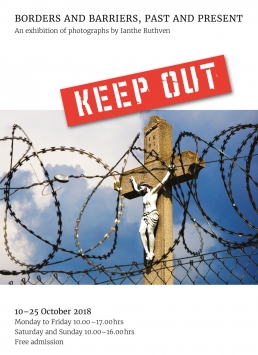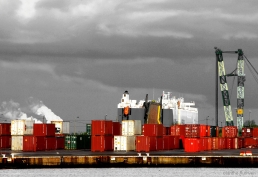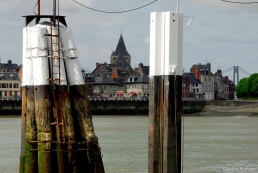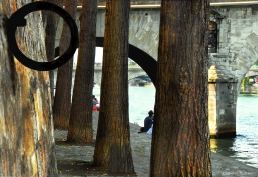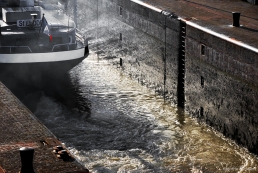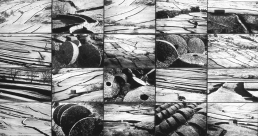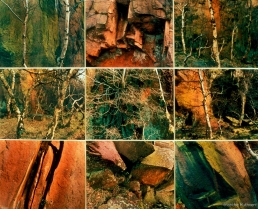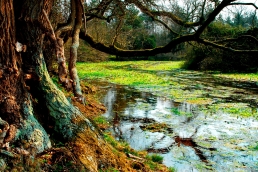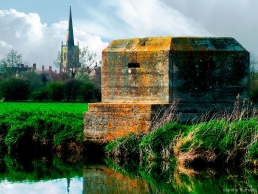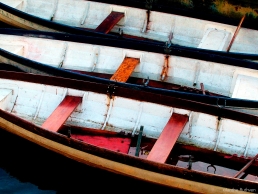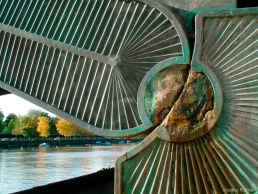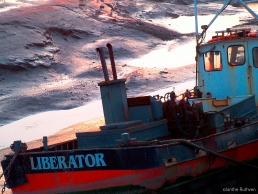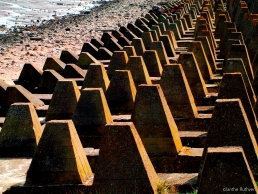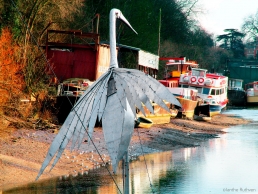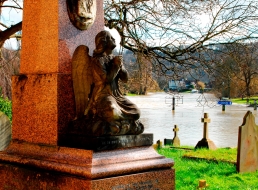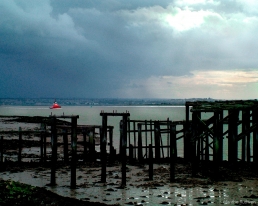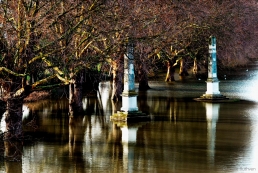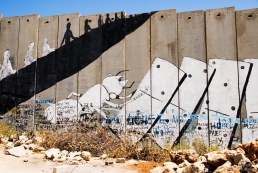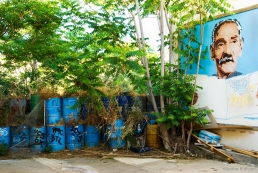Multiple Images
Composite photographic constructions as shown at Lefevre Gallery, 2002, and other venues.
One-person Exhibitions
- 1996 Cadogan Contemporaries, London, SW3
- 1996 Erco Lighting Ltd, Albemarle Street, London, W.1
- 1998 Dean Clough Galleries, Halifax, Yorkshire – (Photo98)
- 2002 The Lefevre Gallery
- 2006 Martin Summers Fine Art Ltd
My aim is to enhance the effects of rhythm and movement. What seems to work for landscape has suggested new ways of approaching architectural forms.
I came to construct composite images out of a sense of frustration with the single photograph as a means of conveying the experience of landscape. Instead of using the lens as a window, I am trying to convey the sense of being inside the landscape, by juxtaposing different but related images of the same subject.
“These splendid photographs achieve what all good art aspires to – they make us look with fresh eyes at things we think we know already.” – Roger Graef
Sea-snails Dancing
As exhibited at Martin Summers Fine Art, London, 2006.
These images of sea-snail and limpit trails at low tide evoke a host of different morphologies, from the shapes of distant galaxies to the flow of Arab calligraphy.
“Their effect is made extraordinary by the focus of Ruthven’s gaze, the bewildering variation in scale, and most important, the multiplication of imagery into grids.” – ARTnews
Unfamiliar Thames
An exhibition of 54 digital prints at the National Theatre, 2007.
Though a mere 215 miles long from its source to the estuary, the Thames is probably the most celebrated river in the world. These images eschew the iconic landmark monuments along its way and focus instead on off-beat details, revealing the familiar in unexpected ways.
London Bestiary
An exhibition of 64 digital prints at the National Theatre, October, 2010. (36 shown here).
London boasts a veritable menagerie of animals, some familiar, others unknown. This exhibition pays tribute to the exuberance and imagination of architects and sculptors through the ages.
The Atlantic Wall: Hitler's Coastal Fortress from the Arctic to the Pyrenees
An exhibition of 140 digital prints of the Atlantic Wall at the Royal Geographical Society, 1 Kensington Gore, London SW7. June, 2014.
Hitlers Atlantic Wall – a chain of concrete fortifications built between 1940-44 stretching some 3,000 miles from arctic Norway to the Spanish border – is without doubt the largest construction project in human history to have been completed in so short a time.
‘Ianthe Ruthven’s stylish and powerful – even compelling – photographic record of the Wall shows up all its intricacies as well as its gigantism: the overwhelming, bare and void structures with which Hitler’s miscalculations littered the west of Europe’ – Joseph Rykwert


KEEP OUT, Borders and Barriers, Past and Present
From the earliest times when empires and states began carving territories into organized segments, rulers have built walls, dykes and ditches aimed at keeping ‘undesirables’ out of their realms. Our very concept of civilisation – of settled communities with sophisticated cultures – derives from the states of antiquity that were bounded and protected by walls. In most cases these structures were not so much defensive barriers capable of deterring aggressors as instruments of population control. They were physical statements in mud brick and stone aimed at creating a sense of security that usually proved ephemeral.
The same applies to the current epidemic of wall-and-fence-building we are witnessing today. Rather than physical obstacles aimed at keeping people such as asylum seekers, refugees, economic migrants, drug smugglers and others away from the industrialized world, they are political placebos making deeper problems of uneven development, economic inequality and collapsing states.
Pressures driving migration include climate change, neo-liberal economic policies, competitive arms production, demand for narcotics, sectarian and tribal conflicts, and the impact of social media. This does not mean that such structures are useless. They may function as filters to movement, stemming the flow of humanity while ensuring that only the most vigorous, adventurous and lucky individuals find ways of getting through.
Many of the walls and barriers erected in urban areas display compelling examples of street and protest art, with striking images of places locals may be physically prevented from visiting. From Tijuana on the Mexican-US border to Bethlehem in Israeli-occupied Palestine walls appear as open-air art galleries that celebrate human aspiration and register the pain of loss.
